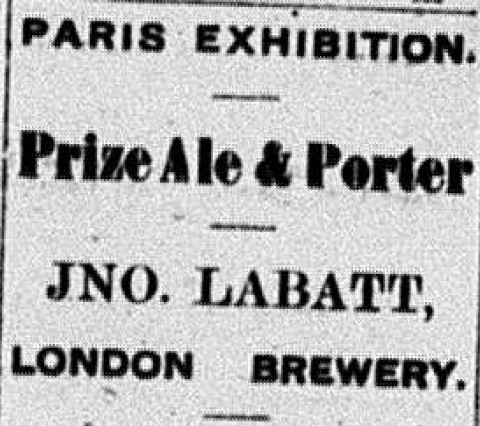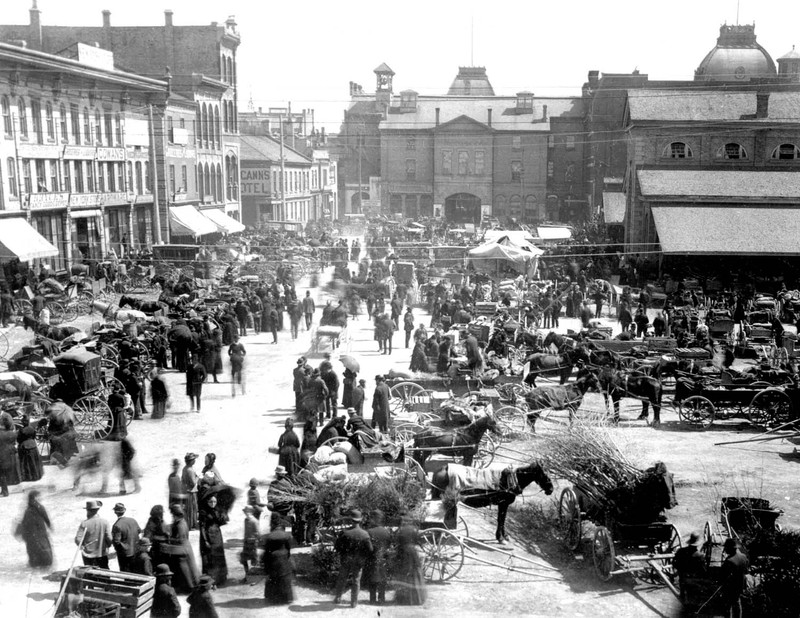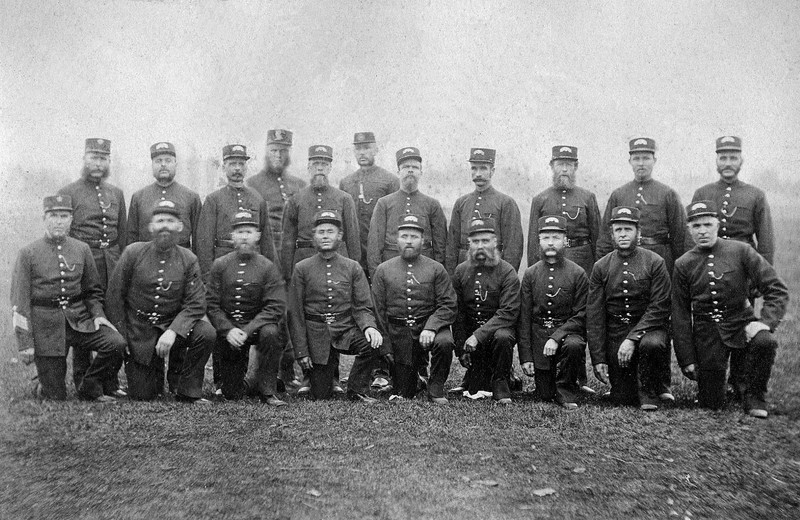Police vs. Alcohol
Introduction
Text-to-speech Audio
(We suggest that you stand across the street from the Market to get the best look of it.)
The location of this stop on the tour is Covent Garden Market, specifically because this was the view from the first London Police Station located on Richmond Street in 1855. The London Police is essential to this tour on alcohol/beer in London because the police force was in charge of managing individuals who abused alcohol. This stop on the tour will provide a brief history of London Police, followed by some tales of drunkards, as written about in the London Free Press during the 1870s.
Images
“London Officer empties contraband liquor, 1931” from the photo gallery on London Police's website.
.jpg)
Advertisement for Carlings' Beer in London Free Press from December 28, 1878.

Advertisement stating that Labatt London Brewery won "Prize Ale & Porter" at the Paris Exhibition in London Free Press from December 30, 1878.

"The first London Police Station was at the rear of the new City Hall on Richmond Street overlooking Covent Garden Market" from the photo gallery on London Police's website.

"Earliest known group photo of the London Police, c. 1877" from the photo gallery on London Police's website.

Backstory and Context
Author-Uploaded Audio
Listen to a narration of this entry's description by Public History.
Text-to-speech Audio
So, now that you have learned a little bit about the Temperance movement, we are going to switch gears and look at those who were in charge of controlling the drunkards- the police. The next stop on this tour is just outside Covent Garden Market, which in 1856 was the view from the station located on Richmond Street, specifically at the rear of City Hall. This was one of three stations by 1877. In 1849 it was deemed that all cities in Upper Canada required a police force, leading to the creation of London’s official police force in 1855. During the mid-nineteenth century, policing mainly focused on by-law enforcement, but as London became a city the idea of policing and policemen shifted. Looking towards the English model, policemen were in turn also “proper men”, one way this was demonstrated was through their uniform, consisting of blue top and bottoms, patches with division number, brass buttons and a baton. These standards extended even further, as recruits were also required to be literate and have references from two gentlemen to be considered for the job.
Now that we’ve introduced policing in the mid 1800s- let’s look at the intersection of alcohol and policing. As mentioned earlier, the temperance movement attempted to limit the consumption of alcohol, however these examples focus on instances of drunkenness prior to the Temperance movement- allowing us to see how nineteenth century policemen dealt with the common issue of alcohol abuse. First is the tale of Patrick Cronin, a man from Wingham. As stated in an article from the London Free Press (LFP), Mr. Cronin is described as following “who has been, to all appearance, considerably under the influence of liquor for a couple of weeks, was again up for drunkenness”. Fortunately for Mr. Cronin he did not suffer any consequences of his actions and was released. A more gruesome reporting, written along with Mr. Cronin in the LFP was that of Matilda Grafton. In the article from 1878, Ms. Grafton was described as a “howling drunk” followed by the note that she attempted to hang herself, survived and was cut down. She was charged two dollars and was discharged. These events are just a few instances of some alcohol-related run-ins with the police. As you can see, these accounts portray the wide array of alcohol-related arrests, from the typical to the more daunting.
To conclude this location on the tour, is a brief tale of a clash between police, alcohol and Whiskey Row, which was talked about previously on this tour. The shenanigans that took place on Whiskey Row led to many in jail and one dead. As demonstrated, the police force in London dealt with many alcohol-related issues. This was bolstered by the fact that London was beer-town. The vast number of breweries and taverns presented ample opportunity for those who wished to take part, in turn, keeping the police force quite busy.
Sources
Lawrence, L. and "illegible". "Police Court- Tuesday." London Free Press (London Ontario), November 16, 1878 from Ivey Family London Room. London Public Library. London, Ontario, Canada.
London Police. “History.” London Police Service. Accessed October 28, 2021. https://www.londonpolice.ca/en/about/History.aspx
Rechnitzer, Olaf. "London's Famous Whiskey Row, With Crimes and Brawls, Remains But a Memory to Londoners - Only one if Ten Hotels Survive." London Free Press (London Ontario), no date available.
Richardson, Mark and John Lisowski. On The Beat: 150 Years of Policing in London Ontario. London, Ont: London Police Service, 2005.
Mrs. Francis Smith Collection retrieved from https://www.londonpolice.ca/en/about/History.aspx
Ivey Family London Room. London Public Library. London, Ontario, Canada.
Ivey Family London Room. London Public Library. London, Ontario, Canada.
Museum London Archives retrieved from https://www.londonpolice.ca/en/about/History.aspx
University of Wester Ontario Archives- London Free Press Collection of Photographic Negatives retrieved from https://www.londonpolice.ca/en/about/History.aspx
